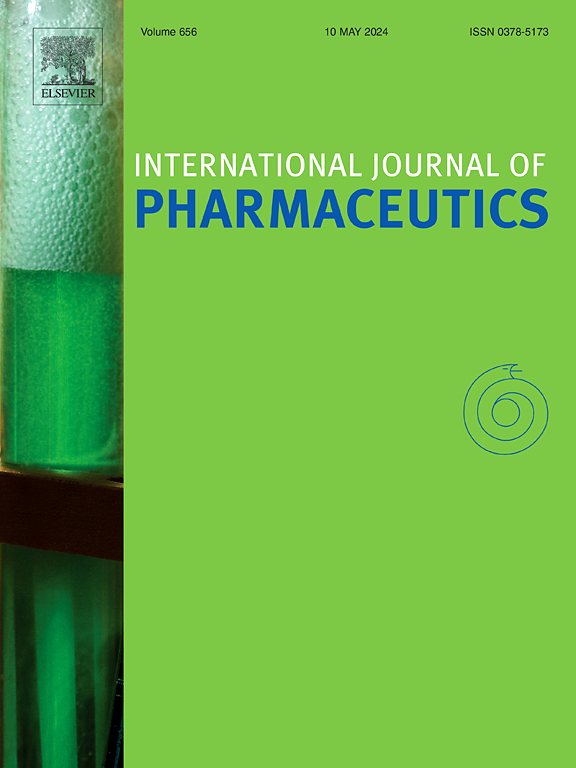Development of a high-fidelity digital twin using the discrete element method for a continuous direct compression process. Part 2. Validation of calibration workflow
IF 5.3
2区 医学
Q1 PHARMACOLOGY & PHARMACY
引用次数: 0
Abstract
This paper is the second in a series of two that describes the application of discrete element method (DEM) and reduced order modeling to predict the effect of disturbances in the concentration of drug substance at the inlet of a continuous powder mixer on the concentration of the drug substance at the outlet of the mixer. In the companion publication, small-scale material characterization tests, a careful DEM parameter calibration and DEM simulations of the manufacturing process were used to develop a reliable RTD models. In the current work, the same calibration workflow was employed to evaluate the predictive ability of the resulting reduced-order model for an extended design space. DEM simulations were extrapolated using a relay race method and the cumulative RTD was accurately parameterized using the n-CSTR model. By performing experiments and simulations, a calibrated DEM model predicted the response of a continuous powder mixer to step changes in the inlet concentration of an API. Thus, carefully calibrated DEM models was used to guide and reduce experimental work and to establish an adequate control strategy. In addition, a further reduction in the computational effort was obtained by using the relay race method to extrapolate results. The predicted RTD curves were then parameterized to develop reduced order models and used to simulate the process in a matter of seconds. Overall, a control strategy evaluation tool based on high-fidelity DEM simulations was developed using material-sparing small-scale characterization tests.
使用离散元素法开发用于连续直接压缩过程的高保真数字孪生模型。第 2 部分。校准工作流程的验证。
本文是两篇系列论文中的第二篇,介绍了应用离散元素法(DEM)和降阶建模预测连续粉末混合器入口处药物浓度的干扰对混合器出口处药物浓度的影响。在相关出版物中,通过小规模材料表征测试、仔细的 DEM 参数校准和制造过程的 DEM 模拟,开发出了可靠的 RTD 模型。在当前工作中,采用了相同的校准工作流程,以评估由此产生的降阶模型对扩展设计空间的预测能力。使用接力赛法对 DEM 模拟进行了外推,并使用 n-CSTR 模型对累积 RTD 进行了精确参数化。通过进行实验和模拟,校准后的 DEM 模型预测了连续式粉末混合器对原料药入口浓度阶跃变化的响应。因此,经过仔细校准的 DEM 模型可用于指导和减少实验工作,并建立适当的控制策略。此外,通过使用中继赛跑法推断结果,进一步减少了计算工作量。然后,对预测的热电阻曲线进行参数化,以建立减阶模型,并用于在几秒钟内对过程进行模拟。总之,通过使用节省材料的小规模表征试验,开发出了基于高保真 DEM 模拟的控制策略评估工具。
本文章由计算机程序翻译,如有差异,请以英文原文为准。
求助全文
约1分钟内获得全文
求助全文
来源期刊
CiteScore
10.70
自引率
8.60%
发文量
951
审稿时长
72 days
期刊介绍:
The International Journal of Pharmaceutics is the third most cited journal in the "Pharmacy & Pharmacology" category out of 366 journals, being the true home for pharmaceutical scientists concerned with the physical, chemical and biological properties of devices and delivery systems for drugs, vaccines and biologicals, including their design, manufacture and evaluation. This includes evaluation of the properties of drugs, excipients such as surfactants and polymers and novel materials. The journal has special sections on pharmaceutical nanotechnology and personalized medicines, and publishes research papers, reviews, commentaries and letters to the editor as well as special issues.

 求助内容:
求助内容: 应助结果提醒方式:
应助结果提醒方式:


